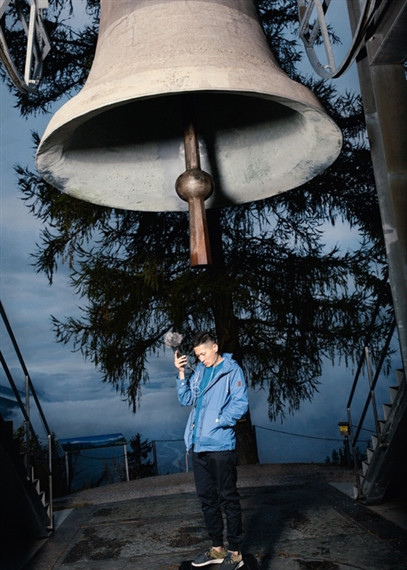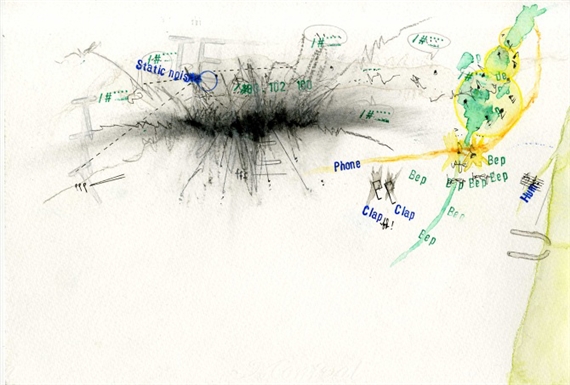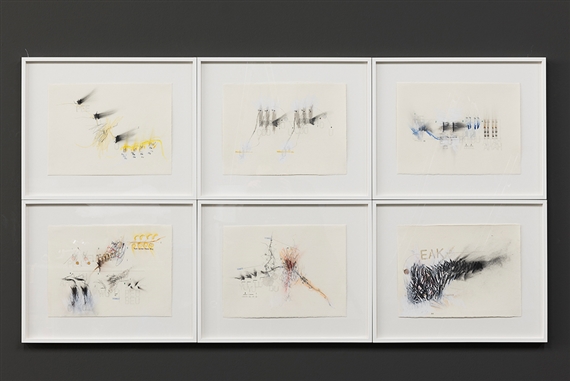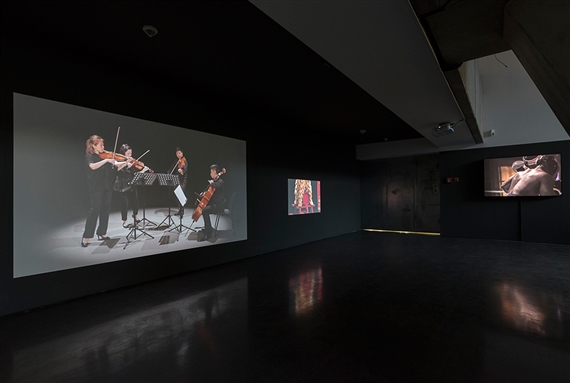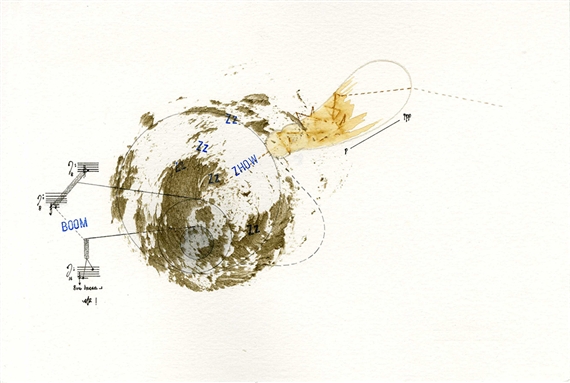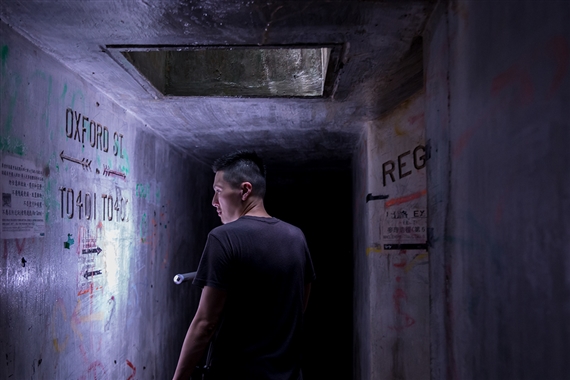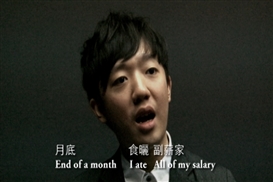Sustain and Resonate: Sound Artist Samson Young at Kunsthalle Düsseldorf
It’s been an extraordinary couple of years for the Hong Kong-based composer and sound artist Samson Young. Young was awarded the first BMW Art Journey at Art Basel in Hong Kong in 2015, which allowed the artist to travel across five continents to study and record historic bells to create a “sonic history of conflicts,” and he has been traveling the world since. His sound projects and performances have made the rounds of the international art fair circuit, with commissions, films, and projects for all three Art Basel editions as well as Frieze London. He has had solo exhibitions in Hong Kong, Taipei, Hiroshima, New York, Kolkata, and now Düsseldorf, boarded an international commercial cargo ship for an artist residency, and was just nominated for the 2017 Absolut Art Award. Add to all that, later this year, Young will represent Hong Kong at the 57th Venice Biennale.
Natalie Hegert / ���ϲ�����
11 Jan, 2017
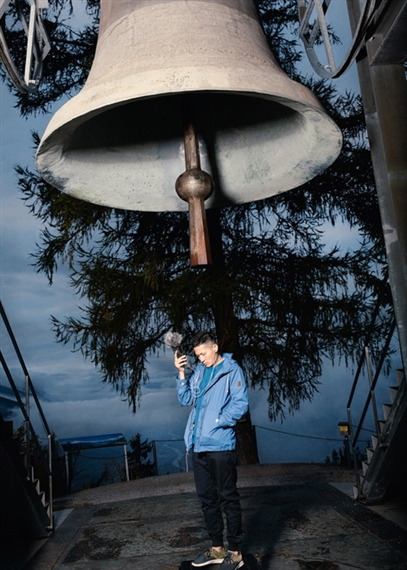
Samson Young, For Whom the Bell Tolls: A Journey Into the Sonic History of Conflicts, 2015 - ongoing, Research-in-progress.
It’s been an extraordinary couple of years for the Hong Kong-based composer and sound artist Samson Young. Young was awarded the first BMW Art Journey at Art Basel in Hong Kong in 2015, which allowed the artist to travel across five continents to study and record historic bells to create a “sonic history of conflicts,” and he has been traveling the world since. His sound projects and performances have made the rounds of the international art fair circuit, with commissions, films, and projects for all three Art Basel editions as well as Frieze London. He has had solo exhibitions in Hong Kong, Taipei, Hiroshima, New York, Kolkata, and now Düsseldorf, boarded an international commercial cargo ship for an artist residency, and was just nominated for the 2017 Absolut Art Award. Add to all that, later this year, Young will represent Hong Kong at the 57th Venice Biennale.
Samson Young, Stanley, 2014 (Detail), neon, sand. Courtesy Galerie Gisela Capitain. Photo: Katja Illner.
These recent successes have enabled Young in his ongoing investigations of the interrelationships between sonic landscapes and history. On his Art Journey, Young began the project For Whom the Bell Tolls: A Journey into the Sonic History of Conflicts (2015-ongoing), creating an archive of bell sounds, or, in some cases, their absences, to use in the composition of a new piece. The bell—an instrument used to call masses of people for prayer or for celebration, to mark the daily passage of time, and, often, to hoard raw metal that can be melted down and recast into weapons—forms the connection between disparate sites around the world, each with their own fraught histories, from Vienna to Mombasa to South Carolina. Sonorous and reflective, the project is ambitious in its global scope, yet deeply research-driven (it could be a dissertation).
Samson Young, Landschaft, 2015, ink, pencil, stamp and water color on paper. Photo: Katja Illner.
At each site, Young recorded not only the sound of the bells ringing, but also created field recordings of the ambient sonic environment, wrote personal reflections on the visit and documented the history of the bells, and created drawings expressing his experience of the quality of sound at each site in musical notations, stamped words, smears of graphite and daubs of watercolor. These small works on paper, “sound drawings,” entitled Landschaft (or landscape), are on view at the Kunsthalle Düsseldorf, and will probably be passed over and glanced at rather quickly by most visitors, in favor of Young’s large installation and video works. They are visual approximations of sounds that the viewer is not privy to—a moment passed, recorded, but not as an audio file. But what Young’s landscapes demonstrate is time: time spent at the site, listening, sketching, absorbing. This kind of sustained attention is a note that sounds throughout the exhibition.
Samson Young, Landschaft, 2015, ink, pencil, stamp and water color on paper. Photo: Katja Illner.
Samson Young was born in Hong Kong in 1979, and studied music, philosophy, and gender studies at the University of Sydney, music composition at the University of Hong Kong, and received his doctorate in composition from Princeton University. But the school and the concert hall could not contain him—the traditional pursuits and performances of a composer were too restrictive, so he turned to contemporary art, where he found the freedom to develop his ideas. His academic background, however, informs his approach to art, from his interest in music, sound, history, and critical theory, to his work’s emphasis on exhaustive research.
Samson Young, Muted Situations, 2014, Installation view Kunsthalle Düsseldorf. Photo: Katja Illner.
Young’s thesis, put forth throughout his individual works, is that sound is an exercise of power. In the video installation Muted Situations (2014), he demonstrates this in a straightforward way, by removing the dominant sounds from a string quartet, a chorus, a pair of lion dancers, a boxing match. As a result, other, incidental sounds can be heard: the slide of a hand up a fingerboard, the inhalation and exhalation of the musician, feet tapping, bodies moving. The sound is distinct, however, from the silence that allows ambient, passive sounds to reveal themselves, such as in performances of John Cage’s 4:33. Rather, in Muted Situations, it is not an absence, but what Young calls a “conscious suppression of dominant voices, as a way to uncover the unheard and the marginalized, or to make apparent certain assumptions about hearing and sounding.” Muting the music, then, of a classical European male composer, draws the focus instead to the bodies of the performers in the string quartet: the power of sound, with its many layers, is made clear.
Samson Young, Muted Situations #1 and #2 (Muted Classical Quartet, 2014, Muted Lion Dance, 2014), Videos. Courtesy the artist. Photo: Katja Illner.
The work Nocturne (2015) again involves a muting of power, along with a reinterpretation. In the work, which will be performed at the museum throughout the duration of the exhibition, a video of night bombings, culled from the Internet, mostly of U.S. attacks in the Middle East, plays silently on a monitor, while the performer recreates the sounds of the distant bombs with live Foley techniques. The explosions of bombs translate to taps on a bass drum wired with a contact microphone; rockets arcing through the air are sounded by a can of compressed air; debris and shrapnel falling from the sky become dried tea leaves sprinkled over tin foil. Here, again, is the intensity of sustained attention: the artist watches the recordings of nighttime bombardments closely, approximating each detonation with the appropriate strength and volume. It is a solemn exercise, a six-hour-long score of unimaginable violence, played out on household items and broadcast on pirate radio channels.
Samson Young, Landschaft, 2015, ink, pencil, stamp and water color on paper. Photo: Katja Illner.
Young’s work continually questions the hegemonies of sound: Who is heard? Who is silenced? It draws extra charge from Young’s background in music; growing up in Hong Kong, educated in the Western classical tradition, Young interrogates the canon while deploying it for his own uses. With his attention trained on the unheard aspects, he invites us to listen in.
Samson Young, Pastoral Music (But It Is Entirely Hollow), 2014 – ongoing, Photo documentation of fieldwork. Photo: Dennis Man Wing Leung.
Samson Young: A dark theme keeps me here, I’ll make a broken music plays at the Kunsthalle Düsseldorf from 17 December, 2016 – 5 March, 2017, with daily performances from 11am–2pm, and 3–6pm.
—Natalie Hegert

 ARTISTS
ARTISTS







